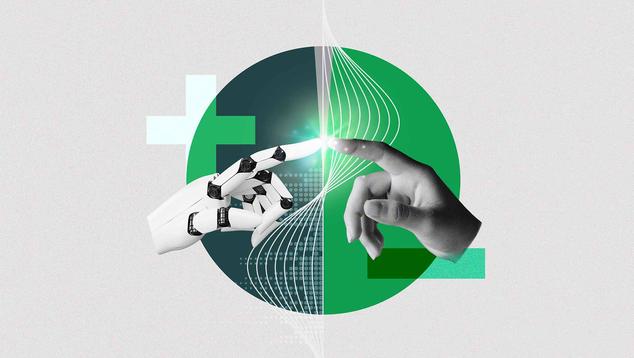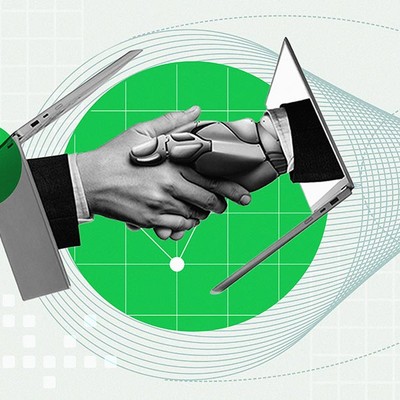Story Highlights
- U.S. adults divided over whether AI poses a novel technology threat
- Majority do foresee AI taking important tasks away from humans
- Most say they will avoid embracing AI as long as possible
WASHINGTON, D.C. — As artificial intelligence transitions from abstraction to reality, U.S. adults are evenly divided on its implications for humankind. Forty-nine percent say AI is “just the latest in a long line of technological advancements that humans will learn to use to improve their lives and society,” while an equal proportion say it is “very different from the technological advancements that came before, and threatens to harm humans and society.”
Despite this split assessment, a clear majority (59%) say AI will reduce the need for humans to perform important or creative tasks, while just 38% believe it will mostly handle mundane tasks, freeing humans to do higher-impact work.
And perhaps reflecting AI’s potential to diminish human contributions, 64% plan to resist using it in their own lives for as long as possible rather than quickly embracing it (35%).
Majorities Expect AI to Eclipse the Telephone, Internet in Changing Society
Americans may not be convinced that AI poses a threat to humanity, but majorities foresee it having a bigger impact on society than did several major technological advancements of the past century.
Two-thirds (66%) say AI will surpass robotics in societal influence, and more than half say it will exceed the impact of the internet (56%), the computer (57%) and the smartphone (59%). Just over half (52%) think AI will have more impact than the telephone did when it was introduced.
Familiarity Breeds Comfort?
Americans’ perceptions of the impact AI will have on society don’t differ much by gender, age or other characteristics. Most demographic groups are closely split over whether AI is just the next technological thing versus a novel threat. But attitudes vary significantly by people’s exposure to AI.
Seventy-one percent of daily users of generative AI (programs like ChatGPT and Microsoft Copilot that can create new content, such as text, images and music) say AI is just another technological advancement. By contrast, only 35% of those who never use generative AI agree.
This 36-percentage-point gap contrasts with smaller differences between users and nonusers of other AI applications in confidence that AI can be harnessed for good. There is a 27-point difference between users and nonusers of virtual assistants (like Amazon Alexa and Apple Siri) in their view that AI will benefit humans. And there are roughly 20-point differences in this endorsement of AI between users and nonusers of personalized content (such as apps that make movie and product recommendations) and smart devices (like robotic vacuums and fitness trackers).
Personalized Content Now Routine; Generative AI Still Novel
ChatGPT reportedly became the fastest-growing app ever, after it was launched publicly in November 2022. However, adoption of generative AI, generally, among U.S. adults is still sparse relative to other types of AI. Less than a third of U.S. adults currently report using generative AI tools either daily or weekly. About a quarter use them less frequently than that, while 41% don’t use them at all.
At the same time, more than four in 10 adults say they use voice recognition/virtual assistants (45%) or smart devices (41%) at least weekly. And nearly two-thirds (65%) report frequent use of personalized content.
Demographic Gaps Greatest for Generative AI Adoption
The broad adoption of personalized content is reflected in the relative uniformity of its use across demographic groups. The same is true for virtual assistants and smart devices, except that — possibly reflecting their expense — the use of smart devices is greater among upper- than middle- and lower-income groups and, relatedly, among college-educated and employed adults. Smart devices are also the one technology used more often by women (44%) than men (37%).
On the other hand, there are sizable differences by age, education, employment and gender in the use of generative AI.
- The rate of using generative AI daily or weekly is highest among 18- to 29-year-olds (43%) and lowest among seniors (19%).
- There is an eight-point difference by gender, with more men (36%) than women (28%) using it. However, the gender gap is greater among adults 50 and older than among those 18 to 49.
- Employed adults (37%) are nearly twice as likely as nonworking adults (20%) to be regularly using generative AI.
Bottom Line
While Americans are split over whether AI is a routine step in the evolution of technology or a unique threat, most expect it to diminish the need for human creativity and are hesitant to fully adopt it personally. For now, positive views of AI are closely linked with people’s experience with it, rather than their personal demographics. The implication is that as usage expands, acceptance may follow.
Stay up to date with the latest insights by following @Gallup on X and on Instagram.
Learn more about how the Gallup Panel works.





